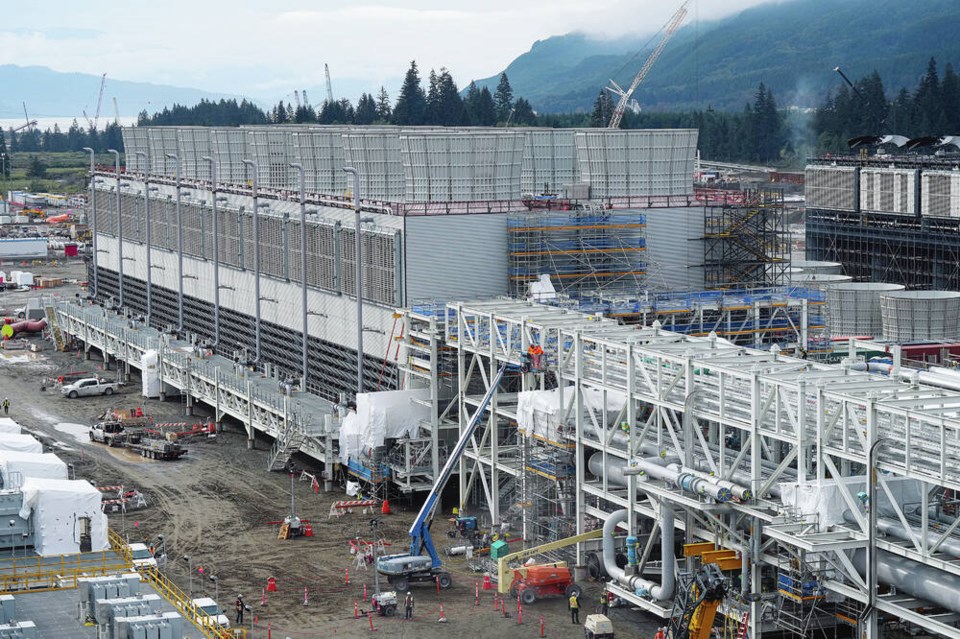A commentary by the Victoria resident who is host of the Power Struggle podcast and started Resource Works.
There’s something about the way we talk about energy that reminds me of my grandmother’s kitchen wisdom: “Don’t let perfect be the enemy of good.”
This old adage feels particularly relevant when considering sa国际传媒’s role in global energy markets, especially regarding liquefied natural gas.
Recently, I’ve been pondering a Cornell University paper that casts doubt on LNG’s environmental credentials. Monique Keiran has been too and argues (“Study finds LNG’s greenhouse-gas footprint worse than coal,” Nov. 2) that on the strength of the paper, British Columbia should not provide its LNG to the world.
I came to a very different conclusion.
The first major thing to understand is that the Cornell study looks at United States LNG operations. These differ from British Columbia’s in numerous ways. Second, the paper’s methods have come under fire for various reasons, including that the author has openly stated that his starting purpose is to stop the use of natural gas.
Crucial real-world nuances make British Columbia’s LNG story uniquely compelling, setting it apart from its Gulf Coast counterparts. Our cooler northern climate naturally reduces the energy needed for the freezing process required to turn gas into a liquid that can be shipped. Our proximity to Asian markets shortens shipping distances substantially, meaning less of the LNG cargo is needed to fuel the trip to market, leaving more of the product for its end use.
These aren’t just talking points — they’re fundamental differentiators that affect the environmental equation. But they are not the only considerations I’m weighing.
Though natural gas is a homogeneous form of energy, LNG buyers prize it for its flexibility. We can see this close to home. In British Columbia, on the coldest day of the year, twice as much energy comes from natural gas as from electricity. On Vancouver Island, the Mount Hayes LNG facility provides a cushion for winter days that would otherwise be very costly and overload the electricity grid.
The idea of pivoting to 100% renewable energy might sound noble, yet it faces significant technical hurdles that can’t be wished away. This isn’t about perfect solutions; it’s about practical progress.
Both the Province of Alberta and the U.S. have managed to reduce emissions from their respective power sectors by half from peak levels, facilitated by displacing coal with natural gas, which is estimated at 50-60 per cent less carbon intensive than coal.
Depriving the market of natural gas or LNG does not mean that renewables are the obvious next choice. The world’s most populous country, India, has little natural gas of its own so is doubling coal production to support a more than 40 per cent increase in electricity supply. Efforts to do this with renewables simply cannot keep up with demand.
The thousands of lives saved by reduced air pollution in regions transitioning from particulate-heavy coal to LNG tell a compelling story that cannot be dismissed. It’s a similar story with the rapid replacement of diesel with LNG in China’s road transportation sector.
There, LNG-powered trucks now represent 42% of sales, which speaks volumes about the practical benefits of this transition.
What makes me particularly optimistic about British Columbia’s role is our domestic industry’s commitment to technological excellence. Relentless regulatory and public pressure help to explain why our gas fields employ some of the most advanced methane reduction technologies available.
Since 2015, sa国际传媒’s natural gas production has increased by 15-20 per cent, while the volume of gas flared has decreased by 50 per cent.
Progress rarely comes in perfect packages. The key lies in balancing ambitious environmental goals with practical considerations about reliability, cost, and implementation timelines. Waiting for perfect solutions risks delaying meaningful progress in reducing carbon emissions.
British Columbia’s opportunity is to provide a cleaner energy alternative to markets that desperately need it. Our LNG industry represents a thoughtful approach to energy transition – one that acknowledges both environmental imperatives and practical realities.
Things do change over time. We can’t afford to stand still or stop having these important debates. The path forward isn’t about choosing between environmental protection and energy development – it’s about pursuing both with wisdom and determination.
British Columbia’s LNG industry shows us how this balance can be achieved, offering a template for responsible energy development in an imperfect world.
>>> To comment on this article, write a letter to the editor: [email protected]



